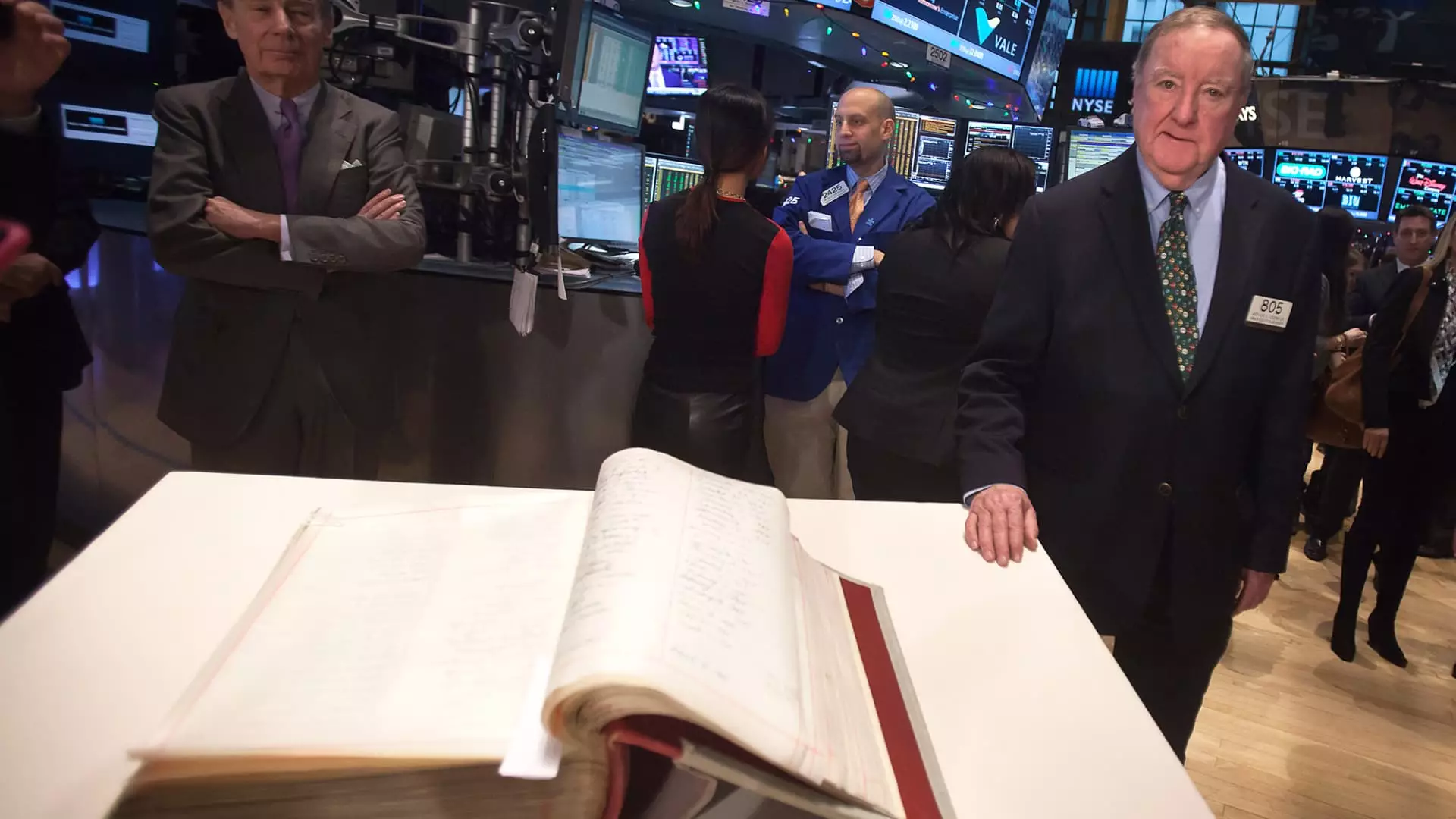The passing of Art Cashin, a venerable figure in the finance world and director of floor operations at UBS on the New York Stock Exchange, marks more than just the end of an era; it signifies the loss of a cherished tradition. For decades, Cashin would grace Wall Street with his annual New Year’s poems, a reflective lyrical take on the events that shaped cultural, political, and financial landscapes. This year, his sons, Arthur III and Peter Cashin, have stepped up to honor their father’s rich legacy in a poignant, yet humorous homage, capturing the essence of their father’s spirit while also confronting the bittersweet realities of loss and remembrance.
As the Cashins commenced their poetic honors, they infused their work with a blend of nostalgia and wry observation. The opening lines reflect a palpable sense of fear that enveloped Wall Street in 2024—a fear that perhaps reverberates through generations of traders emerging from tumultuous market shifts. Their decision to forgo artificial intelligence in crafting their homage underlines a profound commitment to authenticity, reinforcing their intrinsic connection to their father. Like their father, the brothers pair humor with poignancy, exemplifying the human experience through verses that touch upon the mundane and the profound.
The poem artfully nudges the audience through a plethora of events—from the grandeur of the Paris Olympics to the grim political reality of ongoing conflicts. Here, the Cashin brothers juxtapose notable global events and local happenings, illustrating the complexity of an interconnected world. It communicates the essence of being alive in a constantly changing narrative—where joyous moments entwine with sorrowful ones.
The smooth transitions of their reflections echo Cashin’s legacy of clarity and insight while maintaining an engaging narrative style. In acknowledging the passage of not only political leaders but also cultural icons, the poem encapsulates a shared human experience populated by shared losses. The Cashins nod to public figures—like Jim Simons and Bernie Marcus—and those from the entertainment industry, such as the late Mufasa and Darth Vader, lending a light-heartedness to the otherwise sobering reflection of mortality. This blend of levity and sorrow invites readers to both honor and remember those who’ve shaped the world.
Moreover, Cashin’s life lessons linger as his sons convey their father’s passion for discourse—be it markets or philosophy. By sharing personal anecdotes and familial connections, their tribute becomes more than just a reflection on 2024; it morphs into a narrative about human relationships and the communal experiences that bind us.
As they conclude their poem, Arthur and Peter Cashin extend a heartfelt message to their audience—an invitation to treasure loved ones and cherish shared memories. They articulate a universal truth that resonates far beyond the financial district: the importance of relationships during times of celebration and grief alike. Their witty references to diverse cultural symbols, from Irish blessings to Jewish traditions, create an inclusive atmosphere, embracing every reader with warmth in a festive milieu.
The final lines evoke a sense of optimism even amidst their father’s absence, reflecting the resilience of the human spirit. The message for the New Year resonates: it is not just an occasion for reflection but also a celebration of life, love, and continuity.
Art Cashin’s legacy continues to shape the narrative of Wall Street as his sons carry forward his traditions, stepping into roles that blend the past with the future. Their decision to lead the annual singing of “Wait ’till the Sun Shines, Nellie” is symbolic of both remembrance and continuation—echoing their father’s spirit through music and camaraderie.
In navigating through their grief, the Cashins remind us that although one chapter may close, the stories, traditions, and teachings remain intact, ripe for reinterpretation and remembrance. As they ring in the New Year, the world watches not just the closing of the market but the continuing legacy of Art Cashin, demonstrating that as long as we cherish relationships and shared memories, true legacy lives on.

